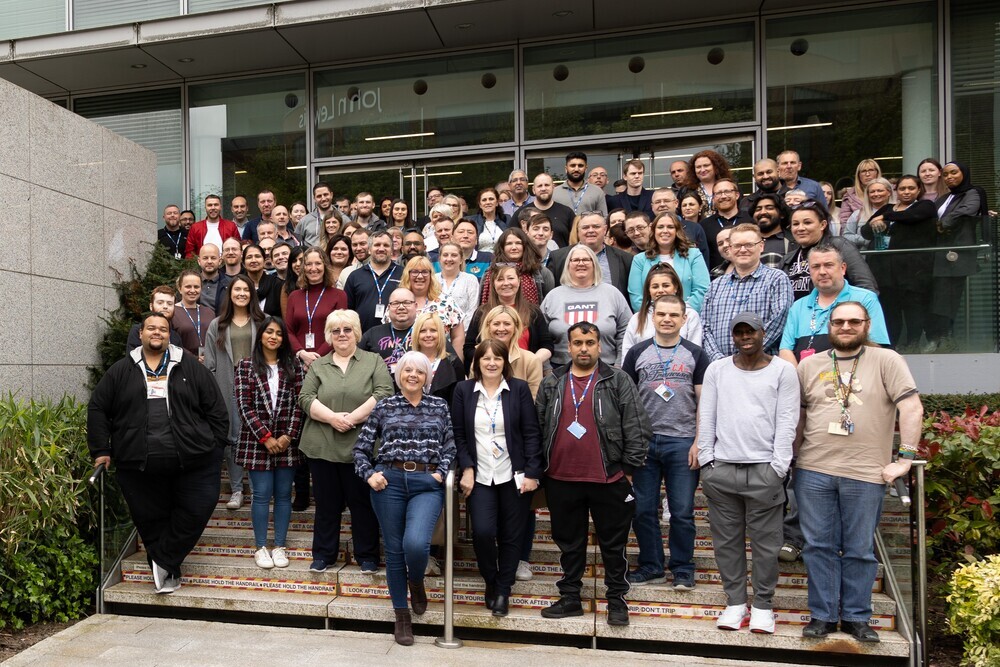Call centres are traditionally associated with large, noisy, open plan offices with workers packed in, with clear guidelines on things like start times, end times and when people can take breaks.
Given this kind of set up, it’s understandable why many managers argue it’s difficult to offer their staff much autonomy. But National Grid Metering, run by Maxine Long, has proven that employees can co-create a job design that works for them and working practices that support their mental health and wellbeing.
“During the pandemic, it could have been argued that the metering was critical infrastructure and had to keep running the business the way it always had been,” says Rachael Davidson, former general counsel for National Grid, now studying for an MSc in Neuroscience and Mental Health.
Embracing the challenge rather than the status quo
“But Maxine, a very energetic, forward-thinking leader, embraced the idea of employees working out the best option for them in her 200 strong business unit. She stepped into the mental health space knowing that, with such big cost and performance challenges, it would be much better to work with the people in her business on how they’d like to work.”
Metering had already been piloting more autonomous and less hierarchical ways of working for about a year when the pandemic struck. “We knew we were going into unprecedented times and our ability to listen to our people, learn quickly and adapt enabled us to not only improve performance but also to support wellbeing, It really did accelerate our plans,” says Long.
Long knows that having the choice about where, when, and how the work gets done to achieve clearly defined business outcomes is good for employee wellbeing. But, of course, this has to be done within the constraints that are determined by customer demand.
Know your business and your people
“It’s about really knowing your business, your people and really embracing hybrid working and accommodating preferences,” she says. “Something that hadn’t been done before in the business.”
As much as possible, Long also gave her colleagues flexibility around how they worked, breaking the workforce into small autonomous groups to decide how the workload and targets would get split and how the targets achieved. These groups also were given the opportunity to design their job description as well as define ‘what does good performance look like in our business function?’
“They also had more input on performance targets and became more group oriented rather than individual,” says Davidson. “And a small group like this is more autonomous and supportive of each other, so usually more aware of who is doing well and where the performance gaps are.”
Autonomy led to clear results
Creating this kind of culture means that the group is able to identify if one of their colleagues is struggling and support them more quickly, without it becoming a big intervention. “The group can agree that they’ll modify that person’s targets for a while, or encourage them to work more flexibly, to have more time to recuperate or rest,” says Davidson.
The impact of giving these employees more autonomy in designing their jobs has been significant. Teams exceeded their targets, leading to enhanced performance goals, and there’s been a continuous rise in employee engagement scores. “All this during the pandemic, too!” says Davidson.
“The results speak for themselves” says Long. “As an example, we have just achieved our highest customer satisfaction scores ever at 89%. In our most recent employee survey 86% of our team felt that we cared about them as individuals, which is double-digits ahead of the expected high-performing norm. We have demonstrated that our approach is working for our people, our customers and business.”
Davidson believes the ability to give employees autonomy is only going to increase as we emerge out of the pandemic and find a ‘new normal’ at work. “Autonomy and a sense of control is such a significant factor in terms of managing mental health,” she says. “We need leaders that are flexible and willing to try approaches that might take more time initially than the cookie cutter plan.”
This topic is one of the many that will be covered at The MAD World Summit, which is taking place in Central London on 11th October. MAD stands for Make A Difference. Now in its 5th year, the Summit is the go-to solutions-focused conference and exhibition for employers who want to embed mental health and wellbeing as a strategic priority. Find out more about the different ways to register and sign up here.
If you’re an EMPLOYER, you can sign up for 3 x 15 minute 1-2-1 meetings with exhibitors at the Summit. This will also entitle you to a FREE DELEGATE PASS WORTH £595.00 and access to all sessions. Terms and conditions apply, view here.
You might also like:
You might also like:
Your Job Can Be Good For You – Backing Business to Revolutionise Ways of Working in the UK












